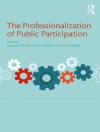Scandinavian popular novels and films have flourished in the last thirty years. In Crime and Fantasy in Scandinavia, Andrew Nestingen argues that the growth and visibility of popular culture have been at the heart of the development of heterogeneous “publics” in Scandinavia, in opposition to the homogenizing influence of the post-World War II welfare state. Novels and films have mobilized readers and viewers, serving as a preeminent site for debates over individualism, collectivity, national homogeneity, gender, and transnational relations.
Crime and Fantasy in Scandinavia provides insight into the changing nature of civil society in Scandinavia through the lens of popular culture. Nestingen develops his argument through the examination of genres where the central theme is individual transgression of societal norms: crime films and novels, melodramas, and fantasy fiction. Among the internationally known writers and filmmakers discussed are Henning Mankell, Aki Kaurismäki, Lukas Moodysson, and Lars von Trier.
Jadual kandungan
Acknowledgments
Introduction: Popular and Social Transformation in Scandinavian Fictions
1. The New Popular Culture: Popular Fictions and Their Publics
2. Medium Concept: Scandinavian Genre and Art Film Hybrids
3. The Melodrama of Demand: Cultural Politics of the Scandinavian Melodrama
4. Johanna Sinisalo’s Monsters: Popular Culture and Heterogeneous Publics
5. Autobiography and the Police: Life Writing and Its Publics
6. The Burned-Out Policeman: Henning Mankell’s Transnational Police Procedural
Epilogue
Notes
Filmography
Bibliography
Index
Mengenai Pengarang
Andrew Nestingen is assistant professor of Scandinavian studies at the University of Washington.












